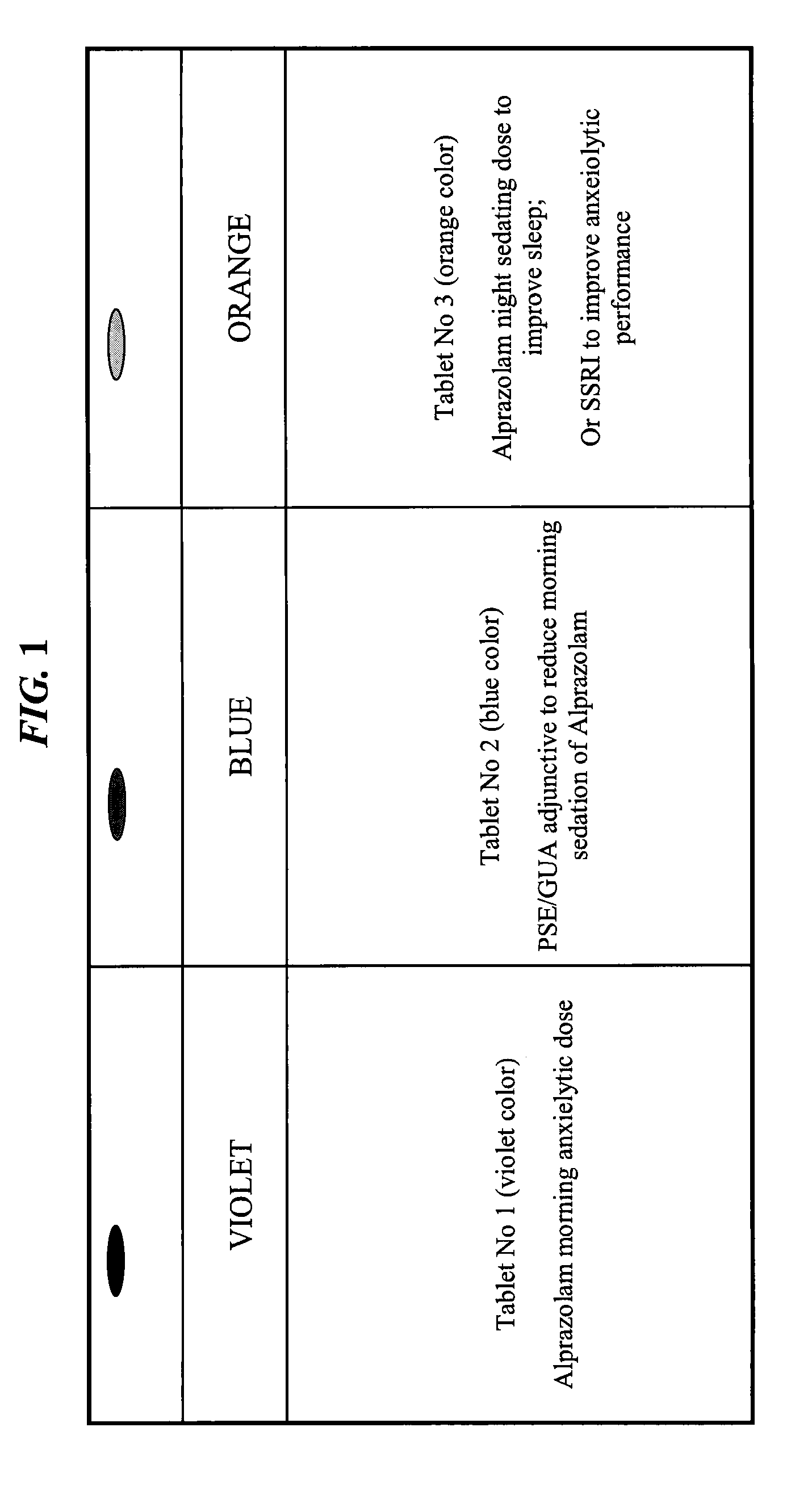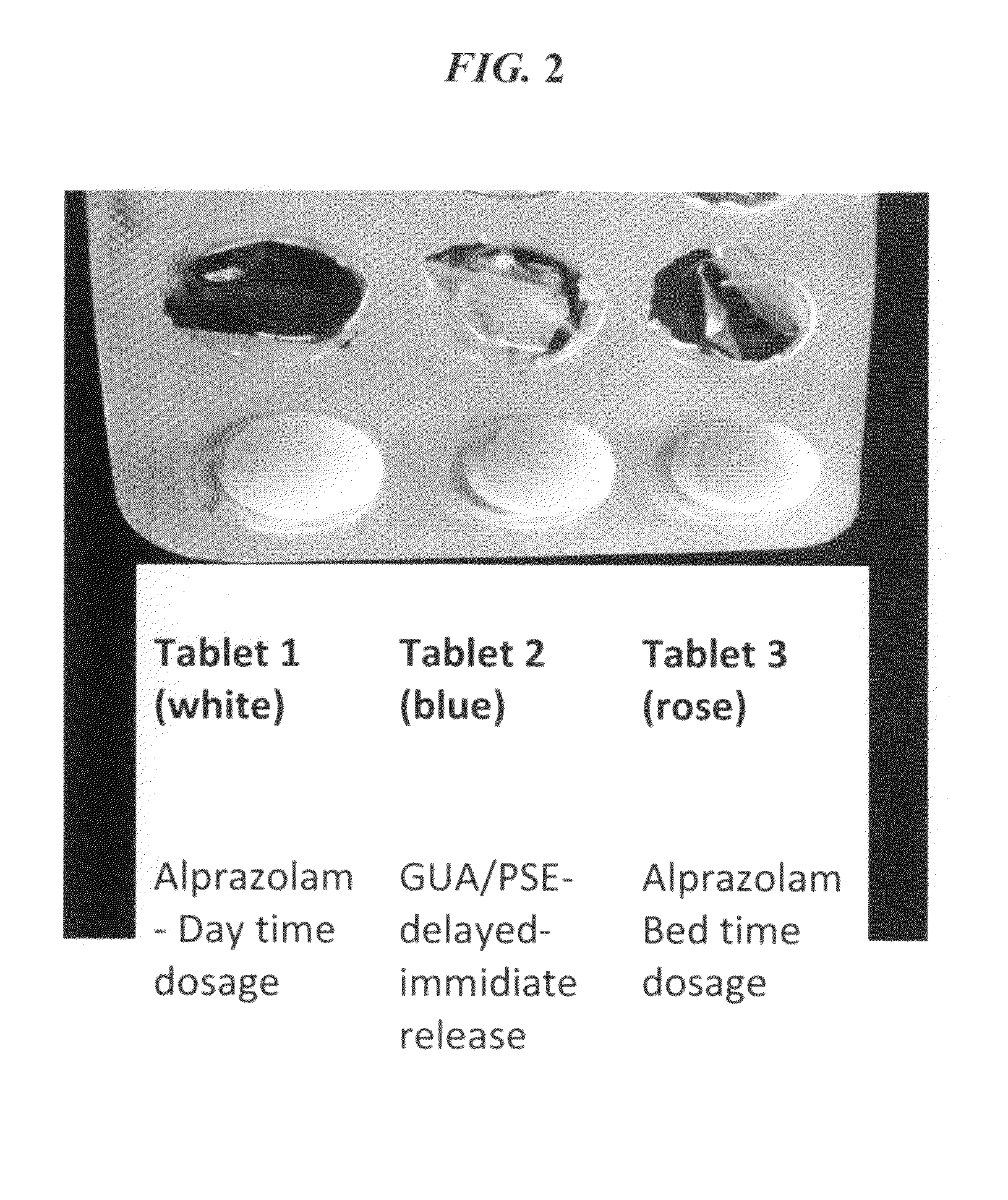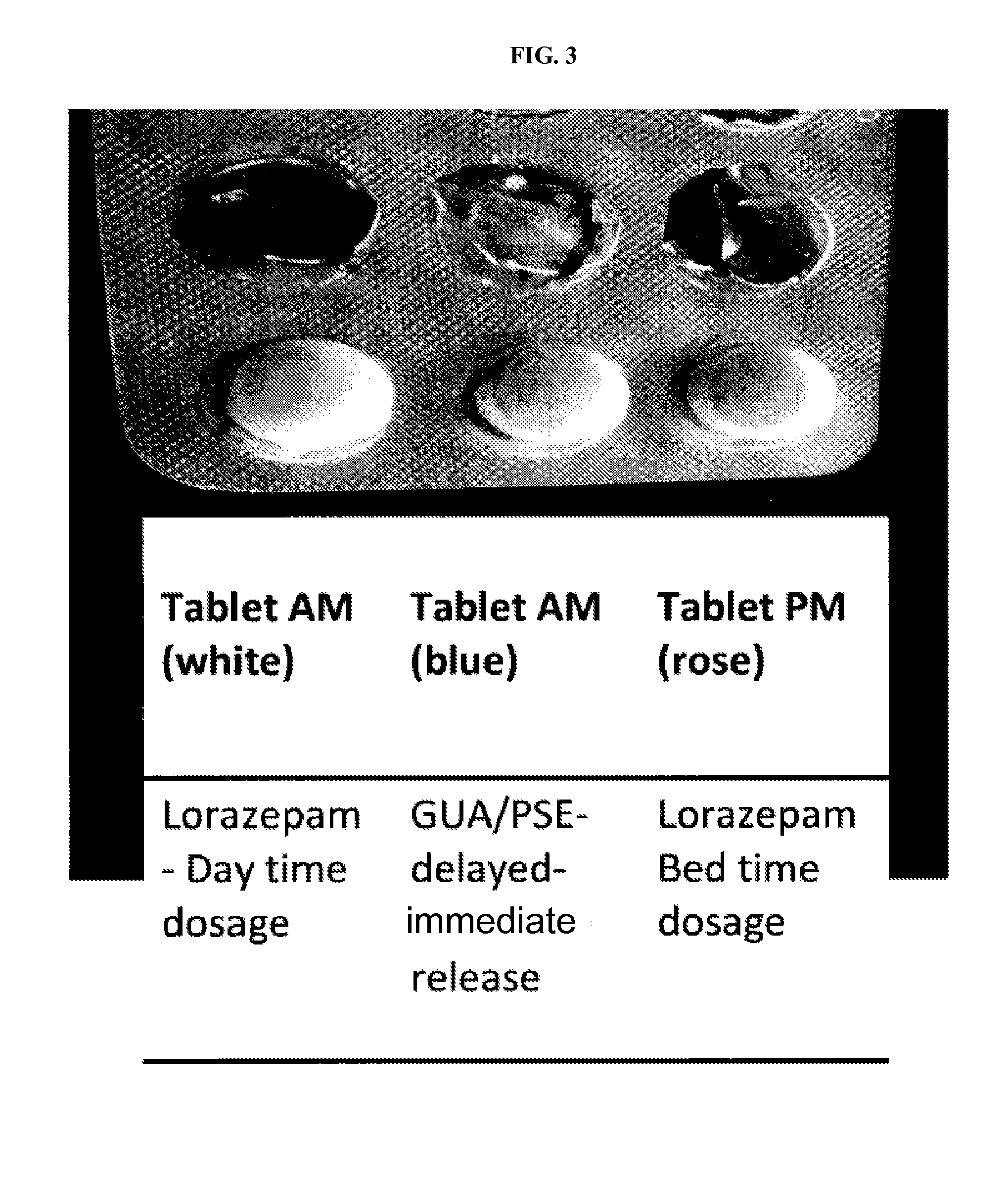CNS pharmaceutical compositions and methods of use
a technology of cns and compositions, applied in the field of pharmaceutical compositions, can solve the problems of increasing severe side effects, losing effectiveness, and general worsening of side effects, and achieve the effect of reducing the side effects of the cns active agen
- Summary
- Abstract
- Description
- Claims
- Application Information
AI Technical Summary
Benefits of technology
Problems solved by technology
Method used
Image
Examples
example 1
[0324]A 42-year-old male patient had experienced tooth pain. The patient was given the following treatment: at 11:00 a.m.—co-administration of Soma (Carisoprodol) with 60 mg of Pseudoephedine. At 11:10 a.m.—600 mg of Guaifenesin. The patient reported less pain than prior to the procedure, without any sedation or other side-effects. At no time during the treatment did the patient feel somnolent or have any desire to sleep.
example 2
[0325]A 40-year old healthy female volunteer was prescribed 250 mg two times a day Soma by her family doctor for reduction of lower back pain. During the treatment, the volunteer suffered from the sedative side-effect of Soma. It was suggested to the volunteer that she try taking the Soma in conjunction with the synchronized vagal neuromodulation treatment of the present invention over two days but not before sleep time. The volunteer agreed to take Soma during the day together with the neuromodulation treatment. She took Soma in the morning and afternoon together with Pseudoephedrine followed 15 minutes later by Guaifenisin. Significantly, during the day, the volunteer reported that she did not feel sedated during this two-day regimen and back pain was effectively reduced.
example 3
[0326]Seroquel is primarily used to treat psychotic symptoms in doses of 400-700 mg daily, with side-effects of headache, dry mouth, as well as other side-effects. To establish that the pharmaceutical composition reduces the sedative side-effects of CNS active agents, a non-blind clinical trial with 5 volunteers was carried out using Seroquel. Over the course of sequential weeks, each participant took one dose of the following:
[0327]Dosage (mg): 400 mg Seroquel; 60 mg Pseudoephedrine (PED—sinufed); 600 mg Guaifenesin (GUA—Mucinex) in the manner outlined below:[0328]1. Control Treatment (CT): At time t: 400 mg Seroquel;[0329]2. Double Cocktail Treatment (DCT-PSE): At time t: Seroquel+Pseudoephedrine (PSD);[0330]3. Double Cocktail Treatment (DCT-GUA): At time t: Seroquel. At time t+30 min: Guaifenesin (GUA);[0331]4. 4. Triple Cocktail Treatment (TCT): At time t: Seroquel+Pseudoephedrine (PSD) At time t+30 min: Guaifenesin (GUA);[0332]5. Triple Cocktail Treatment, No Delay (TCT-ND): At...
PUM
| Property | Measurement | Unit |
|---|---|---|
| solubility | aaaaa | aaaaa |
| solubility | aaaaa | aaaaa |
| solubility | aaaaa | aaaaa |
Abstract
Description
Claims
Application Information
 Login to View More
Login to View More - R&D
- Intellectual Property
- Life Sciences
- Materials
- Tech Scout
- Unparalleled Data Quality
- Higher Quality Content
- 60% Fewer Hallucinations
Browse by: Latest US Patents, China's latest patents, Technical Efficacy Thesaurus, Application Domain, Technology Topic, Popular Technical Reports.
© 2025 PatSnap. All rights reserved.Legal|Privacy policy|Modern Slavery Act Transparency Statement|Sitemap|About US| Contact US: help@patsnap.com



